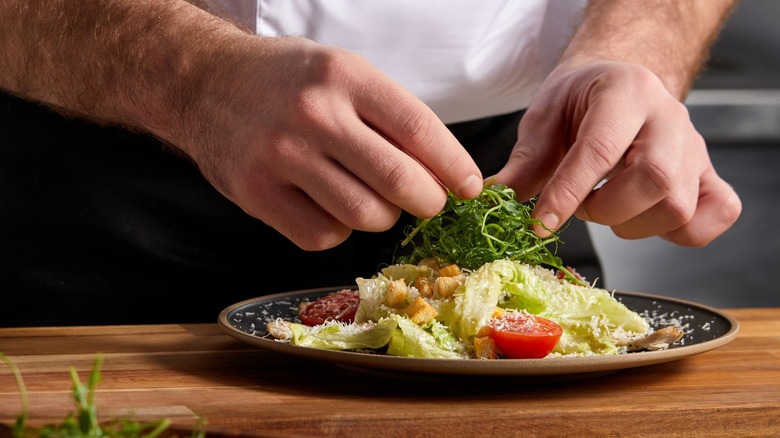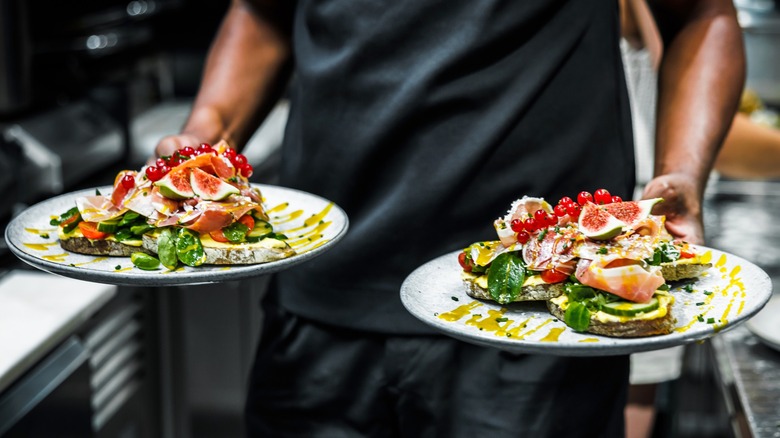The Unexpected Number Of People Who Might Touch Your Food At A Restaurant
One thing most folks don't like to think about as they're served an exquisite looking plate of food is that other people's hands have been all over it. The more staff members you envision touching your cuisine, the worse the notion becomes. Still, before that anxiety puts you off dining out for good, the owner and executive chef at R HOUSE in Miami, Rocco Carulli, had some things to say that should put you at ease. He has intimate knowledge of just how many individuals might be touching your food before you see it. Truth be told, it's less than an anxious mind would imagine.
Every restaurant operates differently, but there shouldn't be many people putting their hands on your meal. "Ideally, the chef, the expo, and your runner or server," Carulli told The Takeout. "And even then, with tongs, gloves, or the power of telekinesis." I'm curious where he found superheroes with telekinetic abilities to work at his restaurant, but his point is nevertheless valid. It's worth noting that not all chefs wear gloves when cooking (which isn't necessarily a bad thing). Gloves or no, any professional kitchen worth its salt trains staff members to prioritize having clean hands and utensils to handle food.
From a quality control standpoint, it doesn't behoove a restaurant to have more staff than necessary touching your food. The chef prepares it, the expo gives it a double-check for quality while putting the final touches on the dish, then someone carries it to your table -– that's it. "If more hands than that are involved, someone's breaking protocol," Carulli said. "It's a kitchen, not a conga line."
Fewer people touch food in fine dining restaurants
When you splurge on sampling the cuisine at a fancy restaurant, you're paying for more than just the cost of premium ingredients and expert gastronomic knowledge. They're designed to operate as finely-tuned machines, so only people who need to be touching your food will do so. Carulli emphasized this saying, "Upscale spots are all about control and precision — fewer hands, tighter systems."
However, when you cross the culinary tracks and venture into fast-food chains or bargain buffets, things don't quite look the same. "At a buffet, sometimes it can be a bit of a free-for-all," Carulli said. While not seeing an adequate number of employees running a buffet is a red flag you shouldn't ignore, a well-staffed buffet will have more people touching the food by design.
Still, those staff members should be just as cognizant of keeping their hands clean as the employees at fine dining restaurants. At a buffet, there's another culprit that might be touching food (other diners), and there isn't much you can do about it; that's just the nature of the buffet beast. "Your potato salad may have been breathed on by strangers with questionable hygiene and aggressive sneeze volume," Carulli said, causing those anxiety levels to rise again. Buffet sneeze guards are there to protect you. But even still, knowing why they exist may be reason enough to opt for visiting better-quality restaurants in the future, if for no other rationale than peace of mind.

